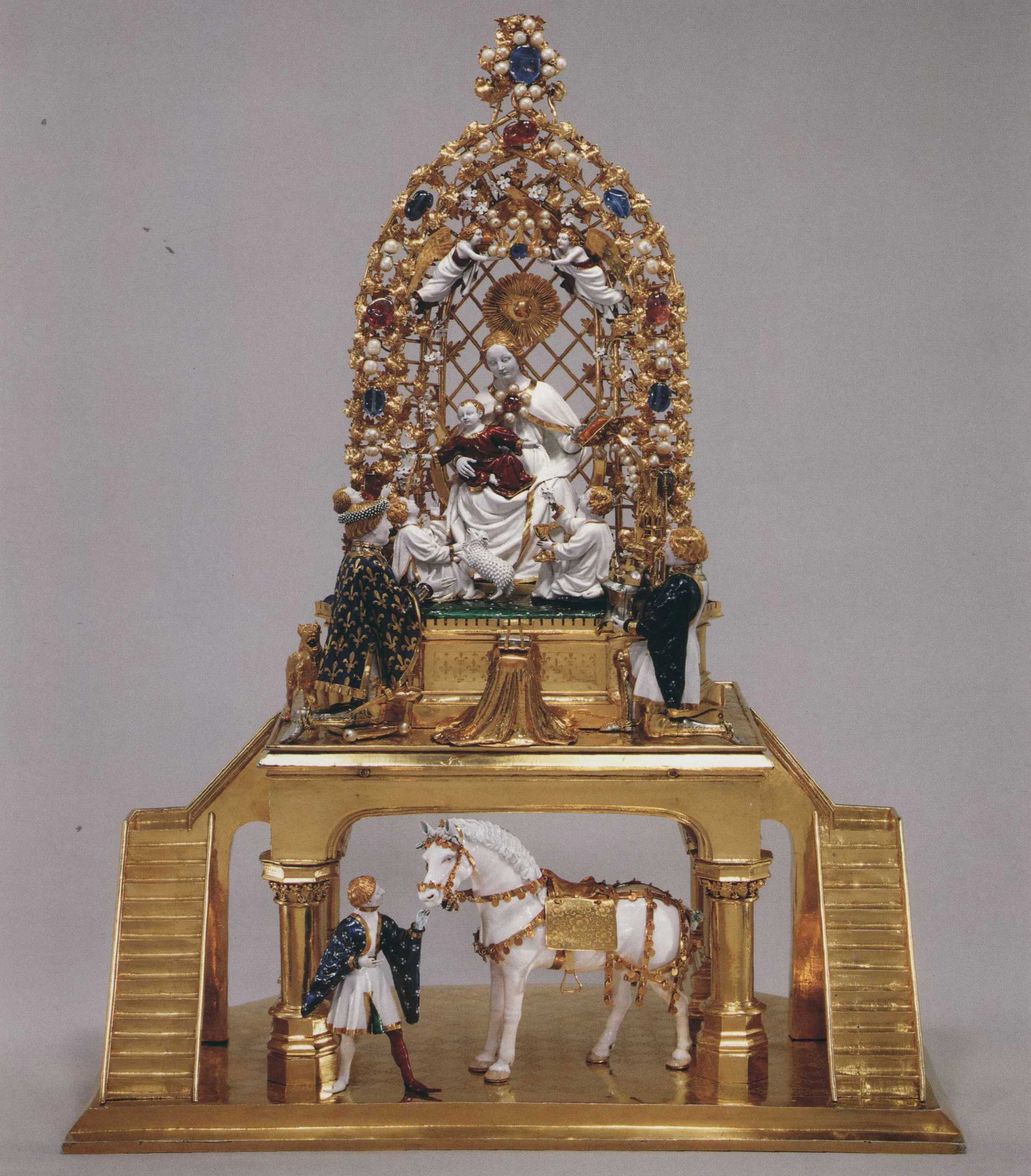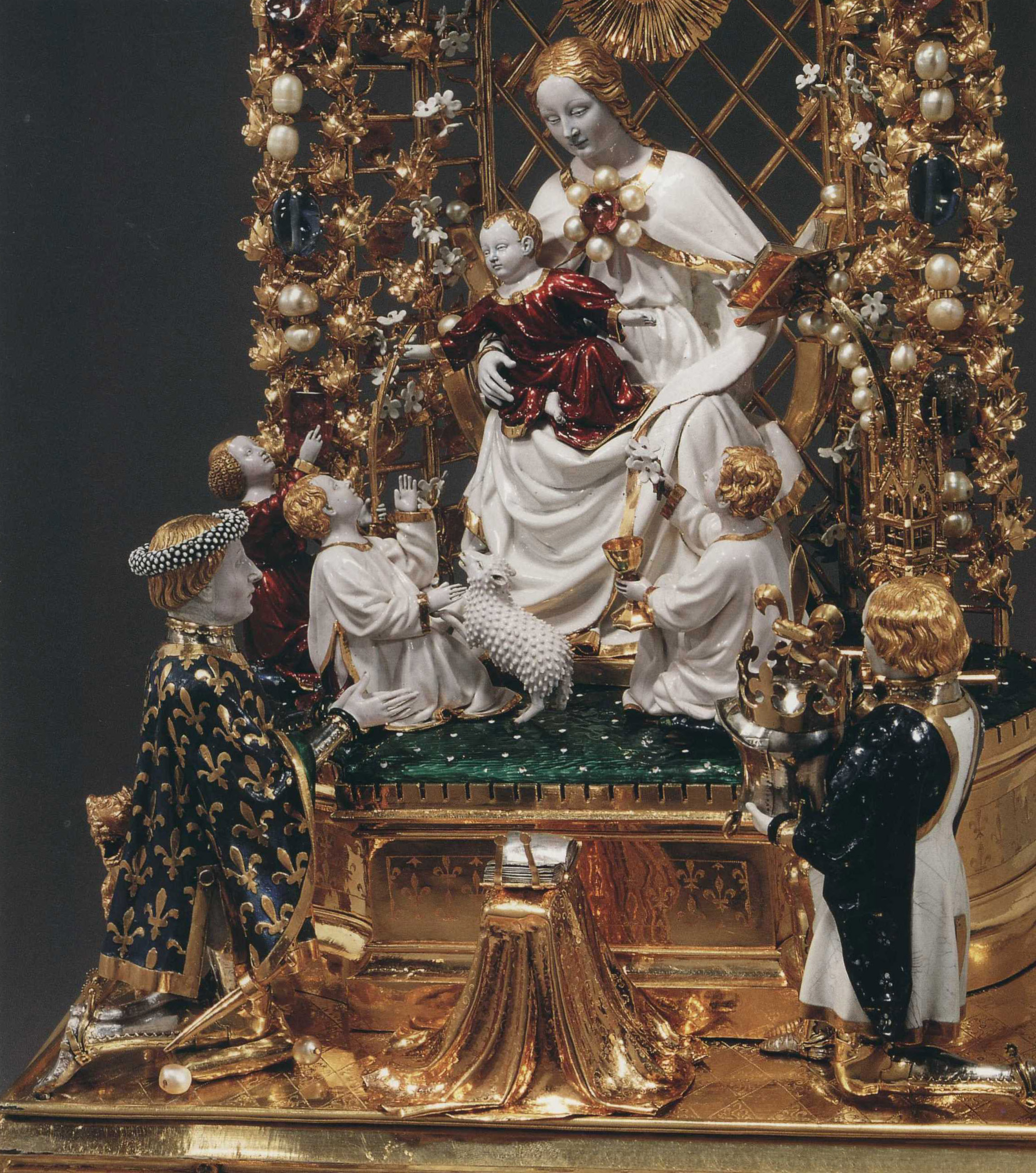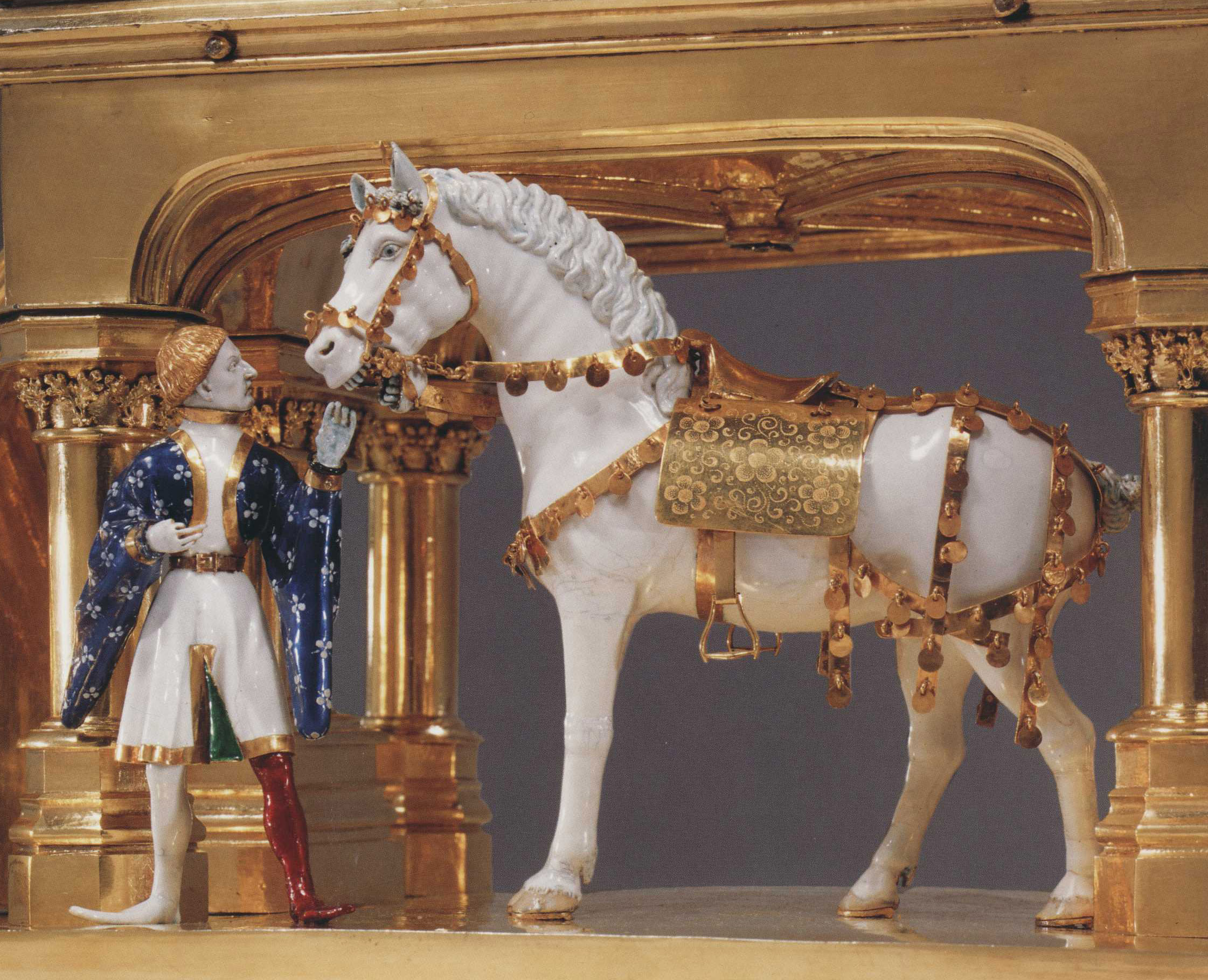


The Index of Medieval Art wishes all our faithful blog readers a joyful New Year! Whether you are currently recovering from the excesses of New Year’s Eve, eating certain foods that bring good luck, contemplating a new exercise regime (that you will abandon by Groundhog Day), or arguing with your most pedantic family member (unless that happens to be you) over when the new decade really begins, we Indexers would like to take the time to examine some medieval New Year festivities for your reading pleasure today.
For the Valois courts in late medieval France, the new year was celebrated by partaking in the étrennes, an annual gift-giving ritual with roots in Roman Antiquity. Originating from the Latin strena, the term étrenne encompassed both the ritual act of gift giving as well as the actual gifts themselves.[1] Thus, on New Year’s Day the highly dysfunctional yet fashionable members of Valois nobility gave one another exquisitely-made, begemmed objects known as joyaux. Few of these resplendent pieces are extant today, but Valois inventories preserve a wealth of information on the kinds of items that were presented for the étrennes and the identities of their original donors and recipients.

The only surviving non-manuscript étrenne is the Göldene Rössl, a multifigured masterpiece of fifteenth-century Parisian gold- and enamelwork. Positioned atop a golden platform, the Virgin and Child loom large beneath a gem-encrusted trellis, towering over delicate representations of infant saints and the kneeling figures of King Charles VI and a knight. Below this assemblage stands a small, white horse led by a page in elegant clothing.

Beyond its obvious material value, the Göldene Rössl also serves as one of the finest examples of émail en ronde bosse, an enamel technique that showcases varying gradations of color and translucency. Presented by Isabeau of Bavaria to her husband Charles VI on New Year’s Day in 1405, the object exemplifies the kinds of sumptuous objects exchanged by members of the Valois courts for the étrennes.

The kneeling figure of Charles VI venerating the Virgin and Christ Child exudes a sense of decorum, sanctity, and solemnity that belies the reality of the ruler’s frequent bouts of madness described in early fifteenth-century sources. The Index includes other portraits of the king, identified within the database as the subject Charles VI of France. Other notable Index Valois subjects include Philip the Bold; Charles V of France, the Wise; and, of course, John, Duke of Berry (Jean de Berry). Curiously enough, the most famous portrait of the duke of Berry, namely, the January calendar page of the Très Riches Heures, does not show a representation of gift exchange. Nevertheless, the luxurious metalwork on display and the sartorial finery of the duke and his courtiers depicted in the illumination underscore the absolute lavishness of the New Year’s celebrations.

Lest we assume that bad gift-giving behavior developed in the modern world, consider the documented foibles of the Valois nobility. For those of us who feel guilty about splurging on items for ourselves during the Black Friday sales, take comfort that Louis of Orléans gave himself a fabulous sword “in the Venetian style,” ornamented with gold and precious stones, one New Year’s Day, or that during the étrennes of 1404, Philip the Bold gifted himself an exquisite gold nef (ship model) covered in gems and pearls that cost a minor fortune.[1]
Have a friend or family member who likes to give you weird “joke” gifts for Christmas or Hanukkah? The Limbourg brothers crafted a fake book for Jean de Berry made from a single block of wood affixed with a faux binding and clasp. Hilarity must have ensued when their illustrious patron attempted to open the trompe l’oeil volume in front of other members of his court on the first of January in 1411.[2]
Forget to buy something for that special someone in your life? Jean de Berry’s wife Jeanne de Boulogne remained, as Michael Camille astutely observed, “notoriously absent [emphasis mine] from the ‘give and take’ of the inventories” that carefully recorded all of the gifts presented during the annual festivities.[3] The duke of Berry also habitually committed the common sin of regifting. As the duke’s inventories attest, many of the joyaux that he received during the étrennes were later regifted to other individuals or were even melted down for the creation of new objects. Nor was he the only member of the family to do so, and even the Göldene Rössl met a similar fate. Only a few months after receiving the piece, Charles VI (always low on funds) pledged it to his brother-in-law Louis of Bavaria as a partial payment for his annual pension![4]
In spite of the depressing historical realities surrounding these ostentatious objects, they will always have a hold on the modern imagination. And why not? The future is golden, dear readers. Happy 2020!

[1] Buettner, “Past Presents,” 608, 623, n. 71.
[2] Michael Camille, “‘For Our Devotion and Pleasure:’ The Sexual Objects of Jean de Berry,” Art History 24, no. 2 (2001): 181.
[3] Camille, “‘For Our Devotion and Pleasure,’” 180.
[4] Buettner, “Past Presents,” 607. For a more in-depth analysis on the creation and history of this amazing object, see Reinhold Baumstark and Renate Eikelman, eds., Das Göldene Rössl: Ein Meisterwerk der Pariser Hofkunst um 1400 (Munich: Hirmer, 1995).
Contributed by Catherine A. Fernandez, Art History Specialist.